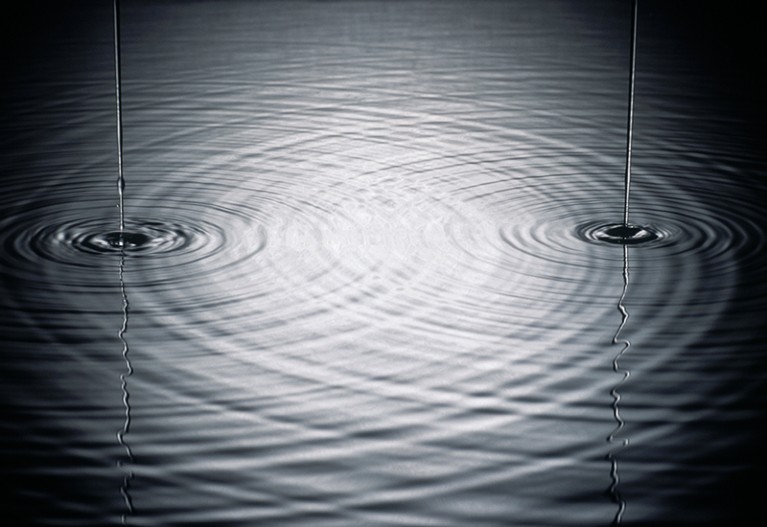
The double-slit experiment’s interference patterns suggest something is in two places at once.Credit: Huw Jones/Getty
Thomas Young, born 250 years ago this week, was a polymath who made seminal contributions in fields from physics to Egyptology. But perhaps his most enduring legacy is proving Isaac Newton wrong about light — and igniting a debate about the nature of reality that still persists.
“The experiments I am about to relate”, he told the Royal Society of London1 on 24 November 1803, “may be repeated with great ease, whenever the sun shines.” In a simple, modern form, Young’s ‘double-slit’ experiment involves shining light of a single frequency (say, from a red laser) through two fine, parallel openings in an opaque sheet, onto a screen beyond. If light were made of streams of particles, as Newton conjectured, you would expect to see two distinct strips of light on the screen, where the particles pile up after travelling through one slit or the other. But that’s not what happens. Instead, you see many bands of light and dark, strung out in stripes like a barcode: an interference pattern (see ‘Wave–particle weirdness’).
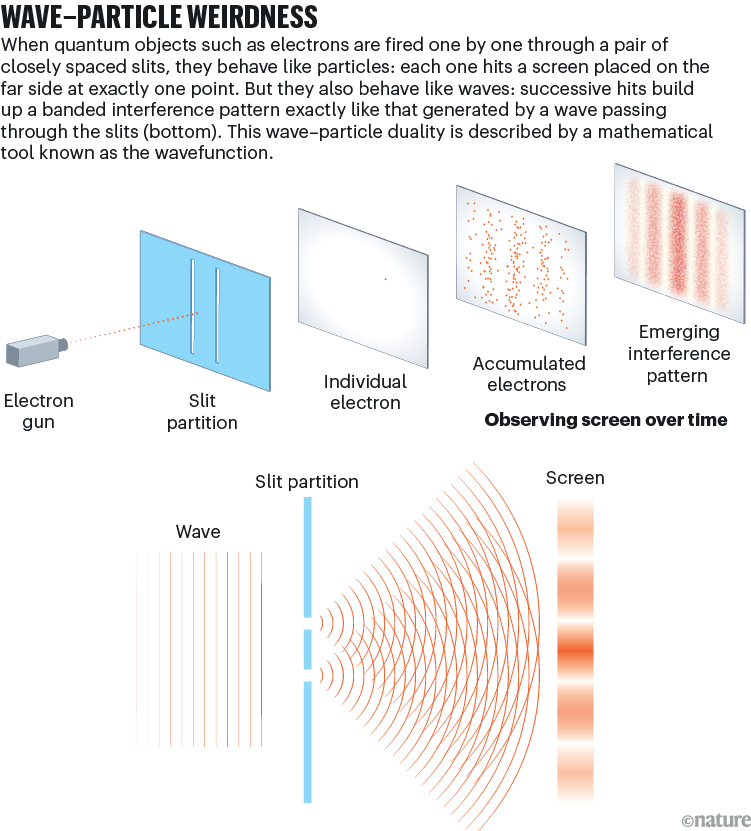
Interference is possible only if light behaves as a wave that strikes both slits at once and diffracts through each, creating two sets of waves on the other side of the slits that propagate towards the screen. Where the crest of one wave overlaps with the crest of the other, you get constructive interference and a patch of light. Where a crest meets a trough, you get destructive interference and darkness.
It’s hard to overstate how wild this discovery was to physicists in Young’s time. But the wildness truly began when Max Planck and Albert Einstein laid the foundations for quantum mechanics in the early twentieth century. Today, quantum mechanics forms a peerlessly accurate framework to explain the basic elements of material reality and their interactions. Pretty early on, it became clear that it implied that light is made of indivisible units of energy called photons — particles, in fact. The amount of energy each carried was proportional to the frequency of the light. Some carry enough of a wallop to knock electrons off atoms of metal, giving us the photoelectric effect that enables today’s solar cells. (It was the study of this effect that led Einstein to his conclusions about light’s particulate nature.)
With the emergence of quantum mechanics, the idea of light as a wave faced a challenge. But it wasn’t as simple as going back to the particle view. Further tests of quantum theory using the double-slit experiment only deepened the mystery. And it hasn’t been solved yet.
Singularly quantum
Imagine, now, that your light source can shoot individual photons of red light at the two slits, while guaranteeing that only one photon goes through the apparatus at any time. A photographic plate on the other side records where the photons land. Classical intuition says each photon can go through only one slit or the other. So, this time, we should see photons accumulating over time and forming two strips of light on the photographic plate. Yet the mathematics of quantum theory implied that the interference pattern would persist.
It was several decades before the technology matured enough to verify these predictions experimentally, using more complex set-ups that were in principle the double-slit. At first, it wasn’t done with photons, but with electrons — entities that we know as particles, but that quantum mechanics predicts act as waves, too. Then, in the 1980s, a team led by Alain Aspect at the Optical Institute in Palaiseau, France, performed the double-slit experiment with single photons2. Quantum theory won out: an interference pattern emerged, even when only single particles passed through the slits.
‘Spooky’ quantum-entanglement experiments win physics Nobel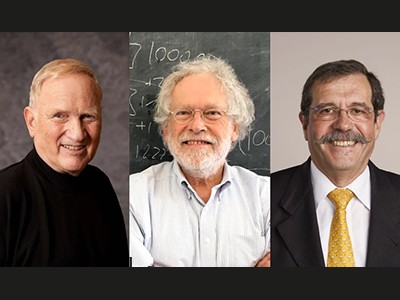
Aspect won a share of the 2022 Nobel prize in physics for his contribution to confirming the predictions of quantum mechanics through experiment. But such experiments leave matters of interpretation wide open. There is simply no way to comprehend what’s happening with minds attuned to the classical world of everyday objects.
When it comes to the double-slit experiment, quantum mechanics does tell a form of story. It says that a photon’s position is described by a mathematical abstraction called the wavefunction — which, as the name suggests, behaves like a wave. This wavefunction, mathematically speaking, hits the two slits, diffracts into two sets of waves and recombines to create the interference pattern. The value of the wavefunction at any location on the photographic plate lets you calculate the probability of finding the photon there. The probability is very high in regions of constructive interference, and very low in regions of destructive interference.
In a sense, then, a photon or any other quantum object acts like both a particle and a wave. This ‘wave–particle duality’ embodies many of the central conceptual mysteries of quantum mechanics that are unresolved to this day. Even if you could know everything about a photon’s initial state, there’s no way to tell exactly where it’ll land on the detector. You have to talk in terms of probabilities given by the wavefunction. These probabilities are borne out only when thousands or tens of thousands of photons are sent through the double slit, one by one.
Before the measurement — in this case, detection by the photographic plate — the mathematics says the particle exists in a superposition of states: in a sense, it has taken both paths, through the right slit and the left. Standard quantum mechanics says that the wavefunction ‘collapses’ when measured, and that the act of observation in some way precipitates that collapse. Before this, the photon has a finite probability of being found in many different regions, but on measurement, the wavefunction peaks at the location in which the photon appears (the probability there equals 1) and is nullified everywhere else (probability equals 0).
It gets even odder. If you can determine which path the photon took on its way to the detector, it acts like a particle that does indeed go through one slit or the other: the interference pattern disappears. But if you cannot glean this ‘which-way’ information, the photon acts like a wave. Whenever there are two or more ways for a photon — or, indeed, any quantum object — to get to a final state, quantum interference occurs.
What’s a wavefunction?
But to generate interference, something has to go through — or at least interact in some way with — both slits. In the mathematics, the wavefunction does the job. Some physicists would say that the wavefunction simply represents information about the quantum system and is not real — in which case it’s hard to explain what interacts with both slits at once. But you can explain the interference pattern if you consider the wavefunction to be real.
This creates its own problems. Imagine a real wavefunction that spreads for kilometres and kilometres before an observer detects the photon. At this point, the wavefunction peaks at the photon’s location, and simultaneously drops to zero everywhere else — over a large, macroscopic distance. This suggests a kind of instantaneous, non-local influence that bothered Einstein no end. One can avoid this with interpretations of quantum theory that don’t collapse the wavefunction, but that opens other cans of worms.
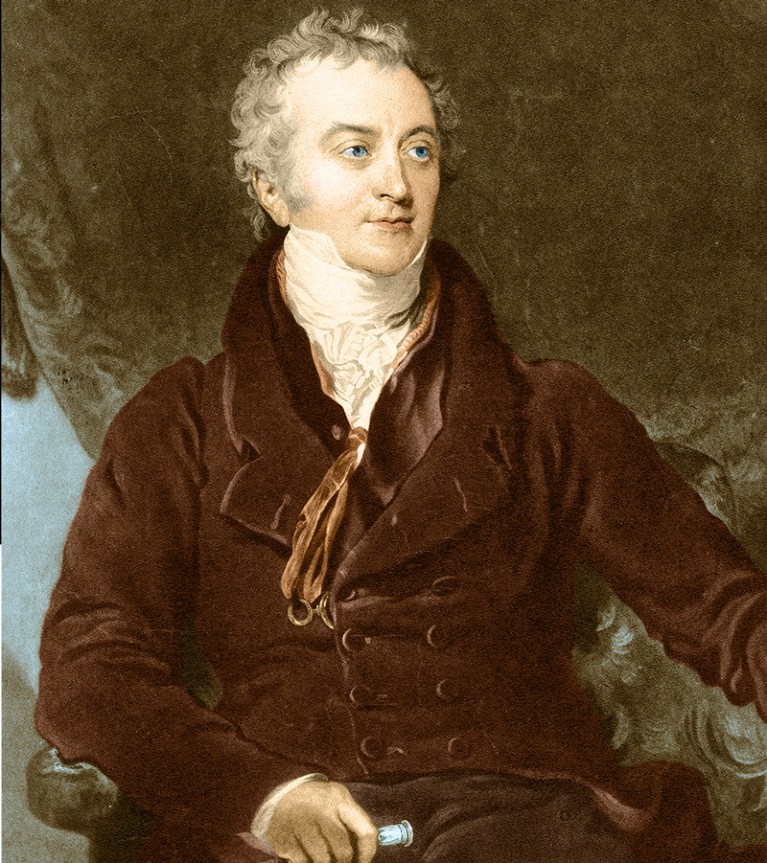
Thomas Young reported the results of the original double-slit experiment in the early nineteenth century.Credit: Photo Researchers/SPL
Perhaps the most notorious is the many-worlds interpretation, the brainchild of US physicist Hugh Everett in the 1950s. This argues that every possible event — in the case of the double slit, a particle going through the left and the right slit — happens, each in its own world. There is no collapse: measurement simply reveals the state of the quantum system in that world. Detractors ask how it’s possible to justify this constant proliferation of worlds, and how, in a many-worlds framework, you can explain why measuring quantum systems yields probabilities, given that there are always definite outcomes in each world.
The de Broglie–Bohm theory, named after quantum pioneers Louis de Broglie and David Bohm, provides another alternative. It says that particles exist with definite positions and momenta, but are guided by an all-encompassing, invisible ‘pilot’ wave, and it’s this wave that goes through both slits. The most profound implication of this theory, that everything is linked to everything else in the Universe by the underlying pilot wave, is one many physicists have trouble accepting.
In the 1970s and 1980s, physicists upgraded the double-slit experiment to seek clarity about the nature of quantum reality, and the perplexing role observation apparently has in collapsing a defined, classical reality out of it. Most notably, John Wheeler at the University of Texas at Austin designed the ‘delayed choice’ thought experiment3. Imagine a double-slit set-up that gives the option of gathering or ignoring information about which way the particle went. If you ignore the ‘which-way’ information, you get wave-like behaviour; if you don’t, you get particle-like patterns.
Superconducting qubits cover new distances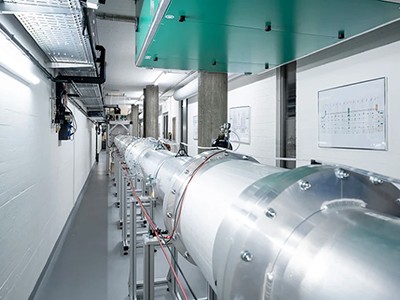
With the apparatus on the ‘collect which-way information’ setting, send a photon through the double slits. It should act like a particle and go through one slit or the other. But just before the photon lands on the detector, flip the apparatus to ignore the which-way information. Will the photon, until then supposedly a particle, suddenly switch to being a wave?
Decades later, Aspect’s team performed this experiment with single photons and showed that the answer is yes4. Even if the photon had ostensibly travelled through the entire set-up as a particle, switching the apparatus setting so that it ignored which-way information caused it to act like a wave. Did the photon travel back in time and come back through the two slits as a wave? To avoid such nonsensical explanations, Wheeler argued that the only way to make sense of the experiment was to say that the photon has no reality — it’s neither wave nor particle — until it’s detected.
Back in the 1980s, Marlan Scully, then at the University of New Mexico in Albuquerque, and his colleagues came up with a similarly befuddling thought experiment5. They imagined collecting the which-way information about a photon by using a second photon ‘entangled’ with the first — a situation in which measuring the quantum state of one tells you about the quantum state of the other. As long as the which-way information can in principle be extracted, the first photon should act like a particle. But if you erase the information in the entangled partner, the mathematics showed, the first photon goes back to behaving like a wave. In 2000, Scully, Yoon-Ho Kim and their colleagues reported performing this experiment6. Surprisingly — or unsurprisingly, by this stage — intuition was once again defeated and quantum weirdness reigned supreme.
Larger and still larger
Others are still pushing the double slit in new directions. This year, Romain Tirole at Imperial College London and his colleagues described an experiment in which the slits were temporal: one slit was open at one point in time and the second slit an instant later7. A beam of light that goes through these temporal slits produces an interference pattern in its frequency spectrum. Again, the mathematics predicts exactly this behaviour, so physicists aren’t surprised. But it is more proof that the double-slit experiment highlights the lacunae in our understanding of reality, a quarter of a millennium after the birth of the man who devised it.
The double-slit experiment’s place in the pantheon of physics experiments is assured. But it would be further cemented if and when physicists using it were able to work out which theory of the quantum world is correct.
For example, some theories posit that quantum systems that grow bigger than a certain, as-yet-undetermined size randomly collapse into classical systems, with no observer needed. This would explain why macroscopic objects around us don’t obviously work according to quantum rules — but how big does something have to be before it stops acting in a quantum way?
In 2019, Markus Arndt and Yaakov Fein at the University of Vienna and their colleagues reported sending macromolecules called oligoporphyrins, composed of up to 2,000 atoms, through a double slit to see whether they produce an interference pattern8. They do, and these patterns can be explained only as a quantum phenomenon. Arndt’s team and others continue to push such experiments to determine whether a line exists between the quantum and the classical world.
Last year, Siddhant Das at the Ludwig Maximilian University of Munich, Germany, and his colleagues analysed the double-slit experiment in the context of the de Broglie–Bohm theory9. Unlike standard quantum mechanics, this predicts not just the distribution of particles on the screen that leads to the spatial interference pattern, but also the distribution of when the particles arrive at the screen. The researchers found that their calculations on the distribution of arrival times agreed qualitatively with observations made two decades before, in a double-slit experiment using helium atoms10. But it was difficult to prove their case definitively. They are awaiting better data from a similar double-slit experiment done with current technology, to see whether it matches predictions.
And so it goes on, a world away from anything Young or his peers at the Royal Society could have conceived of more than two centuries ago. “Thomas Young would probably scratch his head if he could see the status of today’s experiments,” says Arndt. But that’s because his experiment, so simple in concept, has left us scratching our heads to this day.

 ‘Spooky’ quantum-entanglement experiments win physics Nobel
‘Spooky’ quantum-entanglement experiments win physics Nobel
 Light waves squeezed through ‘slits in time’
Light waves squeezed through ‘slits in time’
 Superconducting qubits cover new distances
Superconducting qubits cover new distances
 Quantum sensors will start a revolution — if we deploy them right
Quantum sensors will start a revolution — if we deploy them right
 Test quantum mechanics in space — invest US$1 billion
Test quantum mechanics in space — invest US$1 billion







